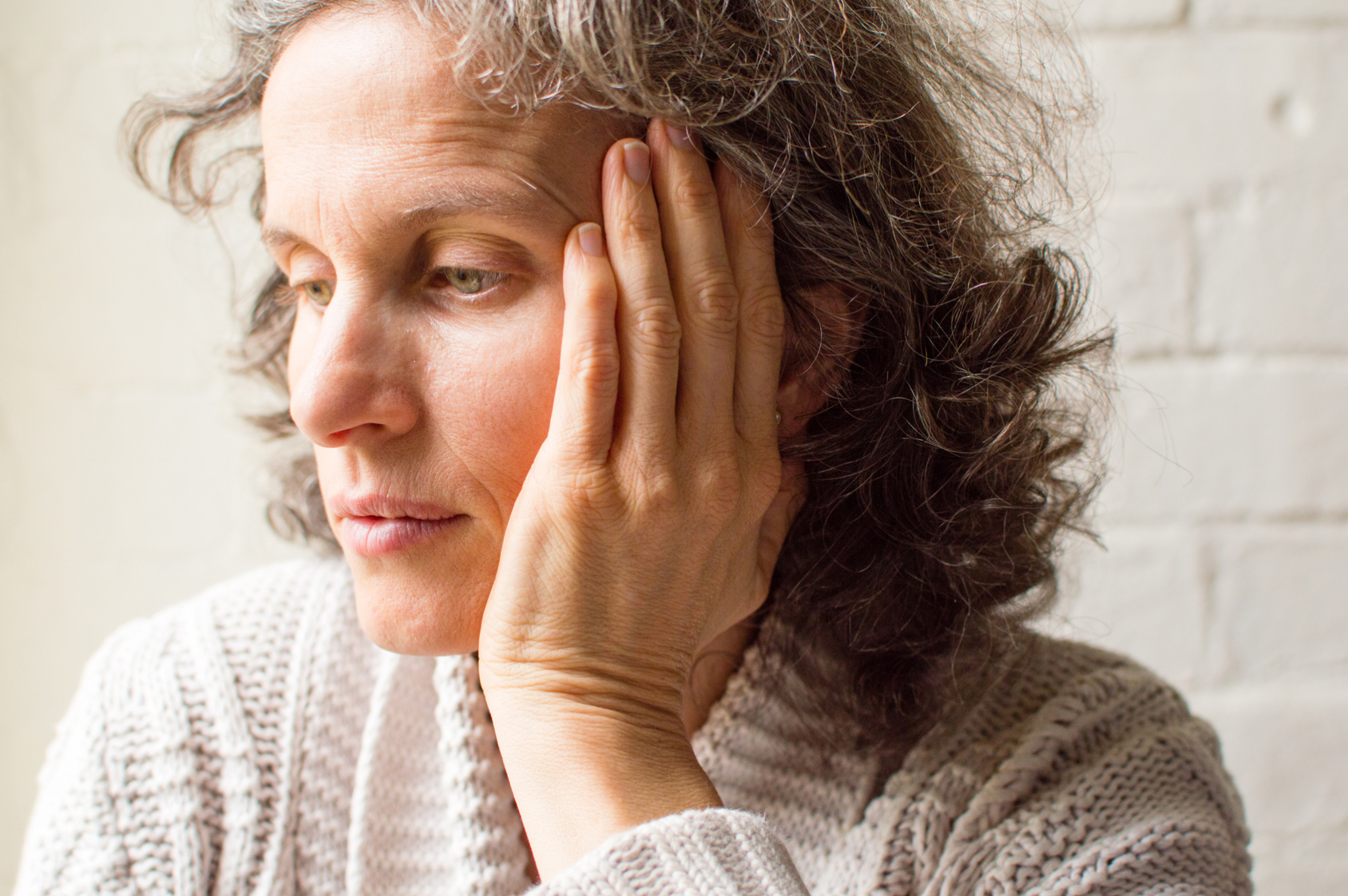Mood Disorders and the Menopausal Transition
In the United States more than 1.3 million women are expected to reach menopause every year. The transition to menopause, or perimenopause, represents the passage from reproductive to non-reproductive life. During the perimenopause, women experience irregular menstrual cycles (e.g., shortened or longer cycles), which reflect the large fluctuation of ovarian hormone secretion during this time. In addition, they may experience vasomotor symptoms, changes in sleep patterns, and psychological symptoms.
In the United States, the mean age of menopause, the occurrence of the final menstrual period, is 51 years. However, the menopausal transition may begin up to a decade before the menopause; the average duration of menopausal symptoms is 4-8 years. In other words, some women will be facing physical and emotional changes over the course of several years, until they finally reach menopause.
Symptoms of the Menopausal Transition
In addition to changes in the frequency of menstrual periods, length of cycles and menstrual flow, the menopausal transition is typically marked by the presence of vasomotor symptoms, such as hot flushes and night sweats (hot flushes causing nocturnal awakenings). A hot flush is a “transient episode of flushing, sweating and a sensation of heat, often accompanied by palpitations and a feeling of anxiety, and sometimes followed by chills”, and is experienced by 45-85% of women, sometimes even before they experience any menstrual changes. The majority of women, however, will experience these symptoms during the year of their last menstrual period or soon afterward.
For women who experience natural menopause, their vasomotor symptoms usually diminish gradually over a period of several years. On the other hand, women who undergo surgical menopause (after removal of the ovaries) commonly experience more severe vasomotor symptoms immediately after surgery. The reason why some women develop hot flushes is yet to be determined, but it may include thermoregulatory problems due to decreased estrogen levels, among other changes.
Other physical changes and symptoms commonly observed during the menopausal transition include insomnia, memory problems, sexual dysfunction, and higher risk for osteoporosis or cardiovascular disease.
Depression and the Menopausal Transition
More than a century ago, investigators were already trying to identify an association between depression and menopause. Initially, women were described as suffering from a “climacteric melancholia” or “nervous irritability” or “fully developed insanity” emerging during this transition. Many decades later, the search for correlates of depression during the perimenopause continues, including different factors such as presence of intense hormonal changes, socioeconomic status, race, ethnicity, history of puerperal depression or significant premenstrual symptoms, among others.
The search for a “perimenopausal depressive syndrome”, however, has led to inconclusive findings; on one hand, it is known that women seeking treatment at menopause clinics are more likely to report significant physical symptoms (e.g., vasomotor complaints), as well as depressive symptoms and anxiety. On the other hand, most women in the community are not likely to experience significant depression while approaching menopause. Thus, it is important to understand why some women (but not all women) will develop depressive symptoms during the menopausal transition. In other words, are we able to identify significant risk factors for the development of a menopause-related mood disturbance?
It has been speculated that some women might be particularly vulnerable during periods of intense hormonal fluctuations (such as those that occur during the menopausal transition, or during pregnancy and the postpartum period). Abrupt hormone changes may affect mood and behavior by altering the equilibrium in several neurotransmitter systems in the brain. This would explain the occurrence of higher rates of depression during the perimenopause (when hormonal changes are the most intense and sometimes chaotic), as compared to the postmenopausal years – when estrogen levels are low, but stable.
Another possible explanation – the domino theory – proposes that the discomfort caused by somatic symptoms of the perimenopause (e.g., night sweats and hot flushes) provokes physical changes (e.g. sleep disturbance) and consequently affects mood stability. Hence, investigators have speculated that the capacity of estrogen to improve mood is secondary to relief of somatic menopausal symptoms and secondary to normalization of sleep.
From a more psychosocial point of view, the menopausal transition has been traditionally identified as a non-adaptative event, during which women are at risk of losing a “major role”: maternity. Thus, the “empty-nest syndrome” (when children leave home) was proposed as a psychosocial cause of psychological symptoms manifesting during the menopausal transition. The relative validity of this theory has been questioned and may not appeal to all women. While some women going through this transition may feel useless, isolated and consequently more depressed when their children leave home, might consider this period an opportunity to expand work/social activities and to dedicate more time to the marital relationship. Interestingly, some recent studies have pointed out that children returning home (e.g., after finishing college, divorce, etc) may represent a stressful event for some parents who had a chance to rearrange their lives accordingly after their leaving.
Treatment Options for Menopause-Related Symptoms
The use of hormone replacement therapy (HRT) has been the treatment of choice to alleviate physical symptoms associated with the menopausal transition (short-term use of HRT) and to help in preventing the clinical consequences of an estrogen-deficient state, including osteoporosis and cardiovascular disease (long-term use of HRT). More recently, the list of benefits of estrogen therapy has expanded, incorporating preliminary but promising findings on the use of estrogen to improve mood and cognition in perimenopausal women.
However, the results of large, prospective studies (e.g., HERS, WHI) have questioned the safety of long-term use of HRT, as well as its efficacy to prevent cardiovascular disease. Because of that, many women have decided to discontinue their HRT regimens. Still others who did yet initiate prescription hormones are now questioning their current treatment and searching for potential alternatives to hormone therapy. Both women and their doctors are now facing a difficult situation: how should they deal with menopause-related physical and emotional symptoms, in the post-WHI era?
Clinicians and health professionals should continue considering many factors when advising women approaching menopause or postmenopausal on treatment choices. For instance, it is important to keep in mind that the short-term use of HRT (up to 3 to 5 years) has not been considered unsafe, and still is the most efficacious treatment for vasomotor symptoms (i.e., night sweats, hot flushes). Moreover, for those who are unwilling to stay on HRT, a quick reminder that an abrupt treatment discontinuation could lead in some cases to the occurrence or reemergence of vasomotor symptoms, interfering with sleep pattern, physical well-being and most probably mood.
Also, the “alternative” treatments available for menopause-related symptoms are not necessarily safe. Some of the so-called “natural” treatments for menopausal symptoms have a significant binding affinity for estrogen receptors, and may result in similar risks. Their use should be carefully considered, particularly in the presence of contraindications for using estrogen therapy.
Lastly, recent studies suggest that antidepressants promote improvement of vasomotor symptoms; they may constitute an interesting alternative for those who are unable or unwilling to take HRT for the alleviation of menopause-related depressive symptoms and vasomotor complaints.
For the latest information on mood disorders and menopause, please visit our blog.
How do I get an appointment?
Menopausal women and those women beginning to experience early “perimenopausal symptoms” frequently suffer from depressive symptoms. The extent to which this is a direct function of hormonal changes associated with the menopause, emerging depression, or a side effect of hormonal therapy is clarified by experienced clinicians in consultation with gynecologists. Consultations regarding treatment options can be scheduled by calling our intake coordinator at 617-724-7792.
Menopausal Research at the CWMH
We currently have no active studies in this field. To view the list of our other active studies, please visit our research page.
RECENT RELATED POSTS
Clinical Update 2024: Recommendations on the Use of Antidepressants in Women Taking Tamoxifen
While some antidepressants may affect the metabolism and efficacy of tamoxifen, many antidepressants can be used safely in this population.
Recruiting for Research Study: Pregnenolone Neurosteroid for Menopausal Depression
As of October 2023, the Neurosteroid Intervention for Menopausal and [...]
Menopause Increases Risk of Relapse in Women with Schizophrenia
Menopause is a period of increased risk for women with schizophrenia spectrum disorders, and women are at higher risk for relapse than their age-matched male counterparts.
Essential Reads: What You Need to Know About Bioidentical Hormone Therapy for Menopausal Symptoms
While many peri- and post-menopausal women request bioidentical hormones, there is no data to suggest that bioidential hormones are safer or more effective than FDA-approved hormone replacement therapies.
FDA Accepts New Drug Application for Fezolinetant, A Novel Nonhormonal Treatment for Vasomotor Symptoms
The FDA accepted a New Drug Application for fezolinetant, a novel, nonhormonal selective neurokinin-3 receptor (NK3R) antagonist for the treatment of menopause-related vasomotor symptoms.
New Research Study at the CWMH: A Novel Treatment for Menopausal Depression
The transition to menopause, or [...]








